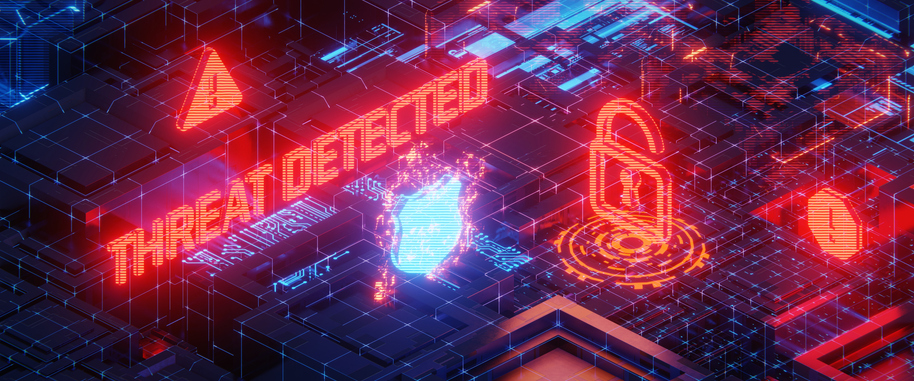3 min read
Cybersecurity: Unlocking Digital Defenses
Cybersecurity Major: Safeguarding the Digital WorldIntroduction:In today's digital era, where technology permeates every aspect of our lives,...
2 min read
 The Amazing Team at Force One
:
May 9, 2024 10:00:00 AM
The Amazing Team at Force One
:
May 9, 2024 10:00:00 AM
Cybersecurity Degree: Safeguarding the Digital Realm
In today's interconnected world, where information is constantly being shared and transactions are increasingly conducted online, the need for robust cybersecurity measures has never been more evident. With this growing demand for skilled professionals who can protect our digital infrastructure, the field of cybersecurity has emerged as a highly sought-after career path. A cybersecurity degree equips individuals with the knowledge and skills necessary to combat cyber threats and ensure the integrity and confidentiality of data. In this article, we will explore the definition, history, importance, current trends, challenges, solutions, and future prospects of a cybersecurity degree.
To begin with, let us define what a cybersecurity degree entails. A cybersecurity degree is an academic program that focuses on developing expertise in safeguarding digital systems, networks, and data from unauthorized access, cyberattacks, and data breaches. It typically involves courses covering various aspects of cybersecurity, such as information security, network security, cryptography, computer forensics, ethical hacking, risk management, and secure software development.
The history of cybersecurity can be traced back to the early days of computing. As computer networks grew in importance and complexity, the need for protection against unauthorized access and malicious attacks became evident. Over time, cybersecurity evolved from basic firewalls and antivirus software to a multidisciplinary field encompassing encryption, intrusion detection systems, threat intelligence, and incident response.
The importance of cybersecurity cannot be overstated. With the exponential rise in cybercrimes, including data breaches, ransomware attacks, and identity thefts, individuals, businesses, and governments are constantly exposed to potential threats. A cybersecurity degree ensures that professionals are well-versed in the latest techniques and technologies to mitigate these threats and protect valuable digital assets.
In terms of current trends in cybersecurity, several key areas deserve attention. Firstly, the rapid growth of the Internet of Things (IoT) has presented new challenges in securing interconnected devices. As more devices become connected, the attack surface for cybercriminals expands, requiring innovative solutions to address these vulnerabilities. Secondly, the increased adoption of cloud computing and hybrid infrastructure models demands robust security measures to safeguard data stored and processed in these environments. Additionally, the rise of artificial intelligence (AI) has both positive and negative implications for cybersecurity. While AI can enhance threat detection and response capabilities, it can also be exploited by cybercriminals to launch sophisticated attacks.
Challenges in the field of cybersecurity are multifaceted. One of the biggest challenges is the skill gap. The demand for cybersecurity professionals far outweighs the supply, resulting in a shortage of skilled personnel. Moreover, the continuously evolving nature of cyber threats requires professionals to remain up-to-date with the latest tools, techniques, and methodologies through continuous learning and development. Additionally, the interconnectedness of global systems means that cybersecurity is a global concern, requiring collaboration and information sharing between different organizations and countries.
To address these challenges, various solutions have emerged. One such solution is the establishment of cybersecurity degree programs in universities and colleges worldwide. These programs aim to equip individuals with the necessary knowledge and skills to defend against cyber threats effectively. Additionally, cybersecurity certifications, such as Certified Information Systems Security Professional (CISSP) and Certified Ethical Hacker (CEH), provide professionals with recognized credentials that validate their expertise.
Looking towards the future, the prospects for cybersecurity professionals are promising. The rapid expansion of technology, the increasing digitization of businesses, and the evolving threat landscape suggest a growing demand for cybersecurity experts. As cyber threats become more sophisticated, professionals skilled in areas such as AI, machine learning, and behavioral analysis will be invaluable in identifying and mitigating these threats. Moreover, with the rise of smart cities, autonomous vehicles, and interconnected critical infrastructure, the need for robust cybersecurity measures will further escalate.
In conclusion, a cybersecurity degree equips professionals with the necessary knowledge and skills to safeguard our digital realm. Its definition, history, importance, current trends, challenges, solutions, and future prospects highlight the undeniable significance of this field. As cyber threats continue to evolve, so must the professionals dedicated to defending against them. By pursuing a cybersecurity degree and staying updated with the latest developments, individuals can actively contribute to building a secure and resilient digital future.

3 min read
Cybersecurity Major: Safeguarding the Digital WorldIntroduction:In today's digital era, where technology permeates every aspect of our lives,...

8 min read
Explore the future landscape of the cybersecurity job market in 2024 and discover the key trends and opportunities that professionals need to be...

4 min read
In the digital age, effective cybersecurity is no longer a luxury but a necessity. For businesses and IT professionals, the stakes have never been...